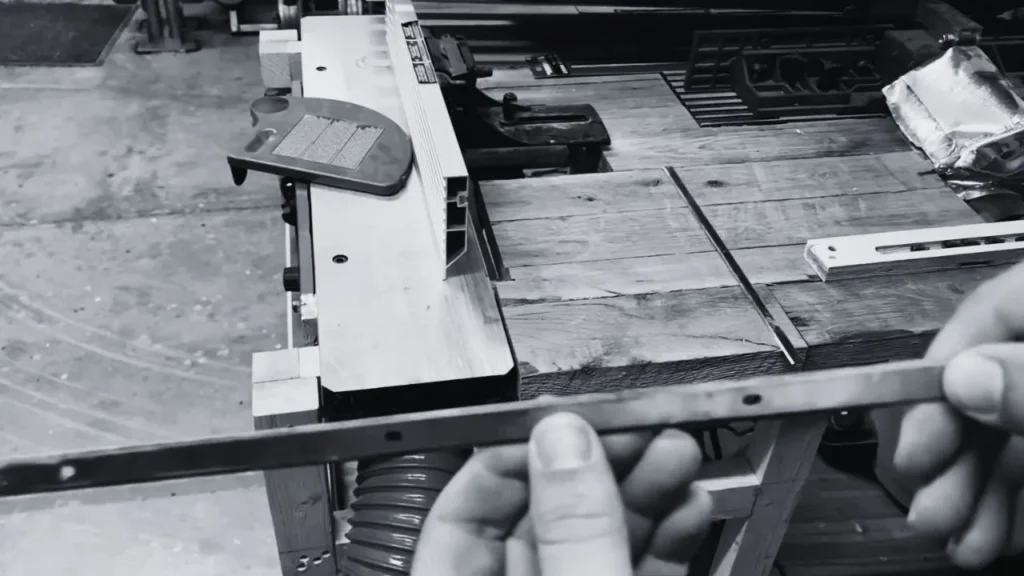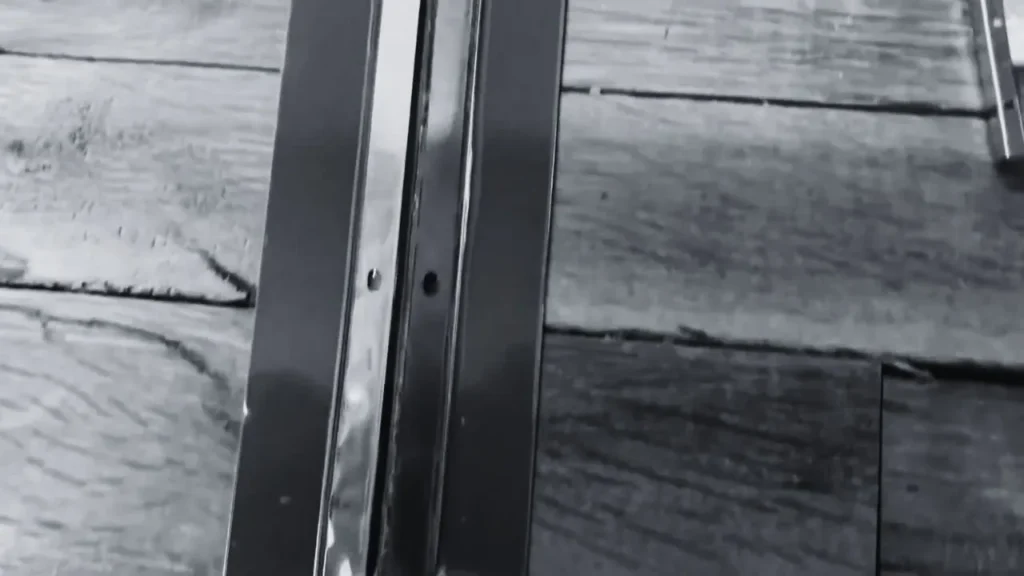Welcome! If you use a thickness planer, you know the importance of keeping those blades sharp and efficient. But how often should you be replacing them? That’s a question we’ll explore in depth. We’ll look at a variety of factors that can influence the lifespan of your blades and discuss some different types of blades and how their longevity can differ. So, without further ado, let’s get started!
Factors Affecting The Longevity Of Planer Blades
Many different elements can impact how long your thickness planer blades last. The type of wood you’re planning, the state of the wood, and the quality of the blades all play crucial roles in blade longevity.
For instance, if you’re working with hardwood or wood that contains defects like knots, the blades can become dull faster. This is because these imperfections make the blade work harder and wear out more quickly. Furthermore, the quality of the blades you’re using also has a bearing on their lifespan. High-quality blades are likely to last longer than cheaper, lower-quality alternatives.
Types Of Thickness Planer Blades & Their Durability
There are various types of thickness planer blades available, and their durability can differ significantly. Some of the most common types include high-speed steel (HSS) blades, carbide-tipped blades, and disposable blades.
HSS blades are known for their durability and long lifespan. They can withstand a lot of wear and tear and are particularly effective for planing softwoods. However, when used on hardwood or wood with imperfections, HSS blades can wear out faster.

Carbide-tipped blades, on the other hand, are incredibly hard and durable. They stay sharp for a long time, even when used on hard or imperfect wood. However, they are more expensive than HSS blades and may not be the best choice for everyone.
Disposable blades are typically made from lower-quality materials and are designed to be replaced regularly. They may not last as long as HSS or carbide-tipped blades, but they are often more affordable and can be a good choice for occasional or light use.
Impact Of Wood Type On Blade Lifespan
As we’ve touched on, the type of wood you’re planing can have a significant impact on the lifespan of your blades. Softwoods, like pine, can be planed using most blade types without causing excessive wear. However, hardwoods, such as oak or maple, can cause blades to dull more quickly, reducing their lifespan.
Furthermore, if the wood contains defects like knots, paint, or soil, this can also cause the blades to dull faster. This is because these imperfections increase the amount of friction on the blade, causing it to wear out more quickly.
Therefore, it’s crucial to consider the type of wood you’ll be planing when choosing your blades. By selecting the right blades for your needs, you can help ensure they last as long as possible, saving you time and money in the long run.
Average Lifespan Of Thickness Planer Blades In Different Conditions
When it comes to the average lifespan of thickness planer blades, there’s a lot of variability. For some users, a set of blades can last for years with regular use and good maintenance. However, when faced with more challenging conditions, the lifespan of these blades can reduce significantly.
Consider the case of hardwoods, for example. Woods like oak or maple are more challenging to plane and can cause the blades to dull faster. In such instances, the lifespan of even high-quality blades like HSS or carbide-tipped ones may be limited to just 1-2 hours of continuous use.
On the other hand, when working with softer woods like pine, the same blades could last for about 50 hours or more before showing signs of wear. This shows the significant impact the type and condition of the wood can have on blade longevity.
Signs That Your Planer Blades Need Replacement
Knowing when to replace your thickness planer blades is crucial for maintaining the quality of your work. There are a few signs to look out for that indicate it might be time for a replacement.

The most obvious sign is a decrease in the quality of your planed wood. If the surface of the wood becomes rough or uneven after planing, it’s likely that your blades are dull. Another sign could be an increase in the amount of effort needed to push the wood through the planer. This can also indicate that the blades are no longer sharp enough.
Finally, any nicks or chips on the blade are clear signs of damage. These can cause ridges on the planed surface and should be addressed immediately to prevent further damage to both the wood and the planer.
Maintenance Tips To Extend Blade Life
Maintaining your thickness planer blades properly can significantly extend their lifespan. Here are a few tips to help you get the most out of your blades.
Firstly, regular cleaning is important. Resin and other debris can accumulate on the blades and cause them to dull faster. Use a blade cleaner or soapy water to clean the blades after each use.
Secondly, consider using a blade lubricant. This can help reduce friction during planing, which can extend the life of your blades. However, make sure to use a lubricant that is safe for use with your specific blades and doesn’t affect the finish of the wood.
Lastly, for blades that can be resharpened, regular sharpening is key. This can help maintain the sharpness of the blades and prolong their lifespan. Just be sure to follow the manufacturer’s guidelines for sharpening to avoid damaging the blades.
Comparing Disposable vs. Resharpenable Blades
When choosing between disposable and resharpenable thickness planer blades, there are a few critical points to consider. Disposable blades, often crafted from less durable materials, are meant for limited use. They are more affordable, making them a popular choice for hobbyists or sporadic users who may not require a long lifespan from their blades.
Resharpenable blades, however, are made to endure. High-speed steel (HSS) and carbide-tipped blades fall into this category. While they carry a higher upfront cost, their ability to be resharpened extends their life significantly. This makes them a more cost-effective option in the long run, especially for frequent users or professionals.
It’s also important to note that resharpenable blades require more maintenance. Regular cleaning and sharpening are necessary to keep these blades at peak performance. However, this extra effort can result in smoother planing and a longer blade life.
Cost Considerations For Replacing Planer Blades
When it comes time to replace your thickness planer blades, cost is an important factor to ponder. While disposable blades may seem like the most cost-effective option initially, their need for frequent replacement can add up over time. Therefore, they may not be the best choice for someone who uses their planer regularly.
On the other hand, more durable and resharpenable blades, such as HSS or carbide-tipped blades, although more expensive upfront, can prove to be more cost-effective over time due to their longer lifespan. Resharpening these blades when they become dull can also be cheaper than buying new ones.
However, keep in mind that resharpening requires time and the right equipment or service. If you’re not prepared to invest in this, then disposable blades might still be a better choice for you.
It’s also worth remembering that the cost of replacing blades can be influenced by the type of wood you’re planning. Hardwoods and woods with imperfections can shorten the life of your blades, making replacement more frequent and, therefore, more costly.
To make an informed decision, consider your usage frequency, the type of wood you’ll be planing, and your willingness to maintain your blades. Balancing these factors will help you choose the most cost-effective blades for your needs.